Tradescantia zebrina is everywhere these days – both literally and figuratively.
Probably because it grows so rapidly, everyone seems to have a cutting to offload at the plant swaps.
This everlasting gobstopper of the plant world is outrageously easy to grow, and it’ll quickly reward you with seemingly endless vines of silvery-purple goodness.
What more could you want from such a versatile plant?
Whether you want a delicate trailing vine to cascade down your bookshelf (as we have) or a wild pop of color in your terrarium/vivarium – this plant could be for you.
Find out how to keep this tropical vagabond happy, healthy, and under control.
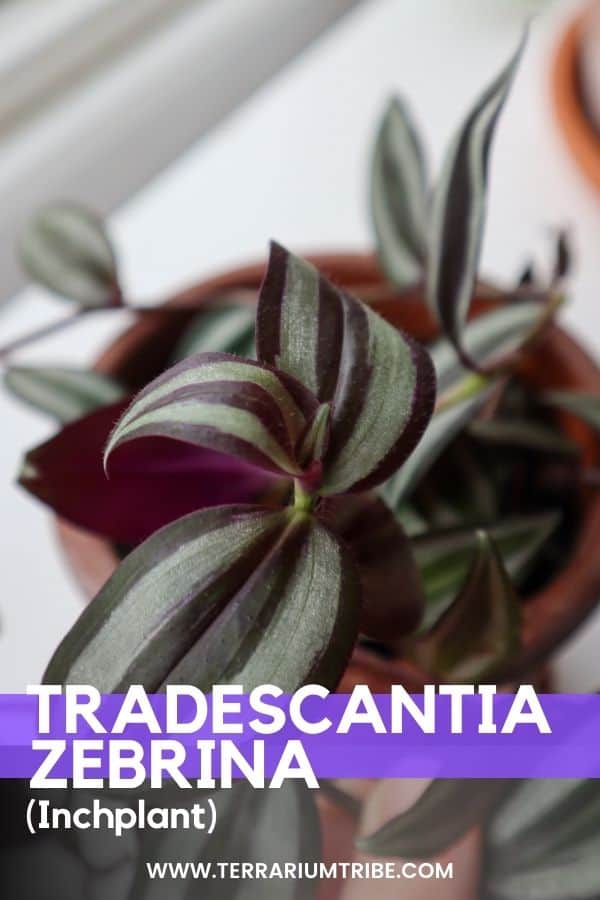
What is Tradescantia zebrina?
Part of the Spiderwort family of plants, Tradescantia zebrina is one of the most vibrant tropical vines out there today.
Named zebrina for its characteristic stripes of burnished silver and army green, underscored with bright flashes of magenta.
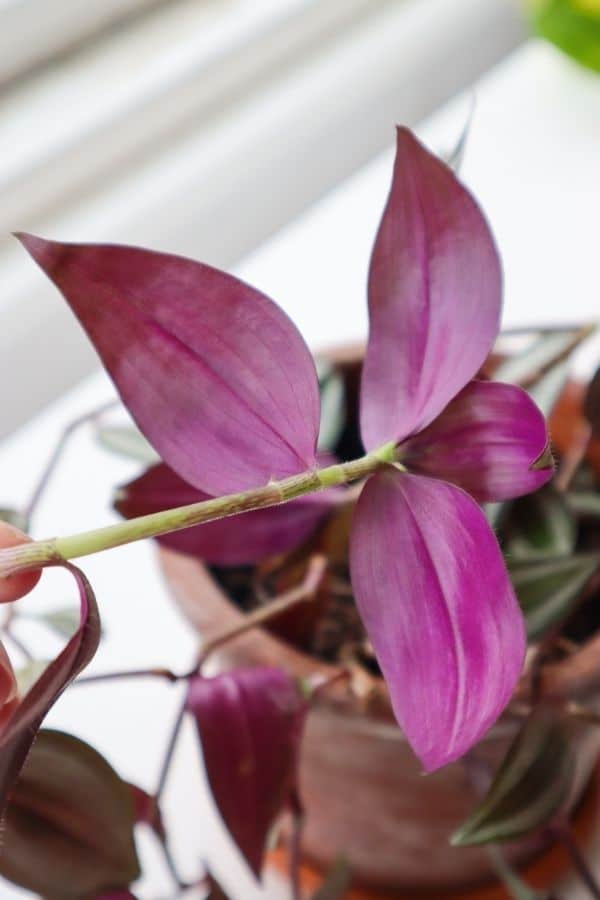
Honestly, this ornate plant really commands your attention.
Though recently (through no fault of its own), it has been getting the bad kind of attention online.
Why We Don’t Call It the Wandering Jew
In the world of horticulture and houseplants, Tradescantia zebrina has long been known as the Wandering Jew.
Which is insensitive (to say the least), and it gets worse if you read about the Biblical story that it’s supposedly named for…
So, there’s been a move away from that name.
Thankfully, this plant has many different common names to choose from.
It’s also known as the Inchplant for its nodes, each being consistently about an inch apart. Personally, I think it’s a very apt name for a species that seems to grow an inch every time you look away.
You can still call it by the Spiderwort name too, or Bloombox and others have recently started calling it the “Wandering Dude.”
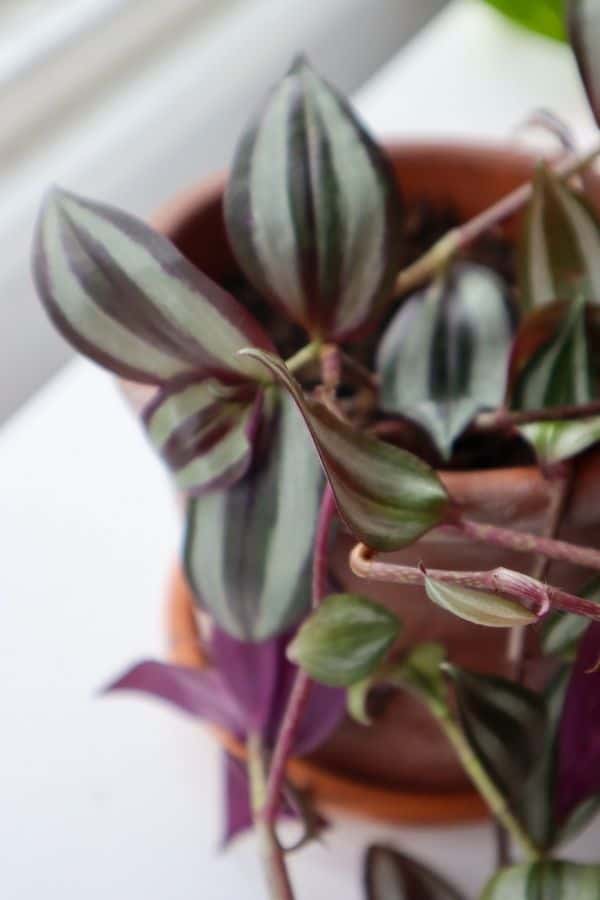
Where to Buy Tradescantia zebrina
See the links below to purchase from reputable terrarium plant shops and marketplaces (may include affiliate links).
Tradescantia zebrina Care & Growth
At a Glance
| Plant Type | Foliage, vine |
| Lighting | Bright indirect light |
| Temperature | 50-75°F (10-24°C) |
| Watering | Regular, even moisture |
| Humidity | Medium – High (50-80%) |
| Growth | Up to 10′ high, 3+ ft spread |
Lighting
As a natural ground cover plant in the tropics, Tradescantia zebrina has adapted to growing in dappled light that’s managed to pierce through the jungle canopy.
In the home, this is best described as bright indirect light.
The brighter the light, the better if you really want to see those colors pop.
We keep ours a good 6+ feet from a South-facing window in partial shade, where it receives some weak direct rays in the evening but mostly just plenty of indirect light through the day,
It’s arguably a touch leggy (they often are), but otherwise a healthy plant.
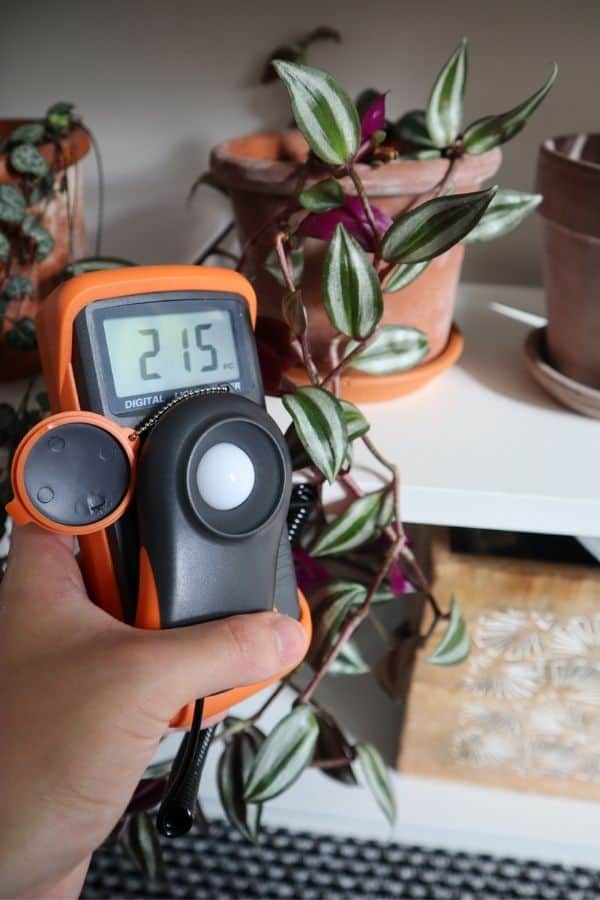
Watering
This tropical vine is pretty forgiving when it comes to watering.
They love consistent moisture, but (probably thanks to their succulent stems) they’re also somewhat drought-tolerant.
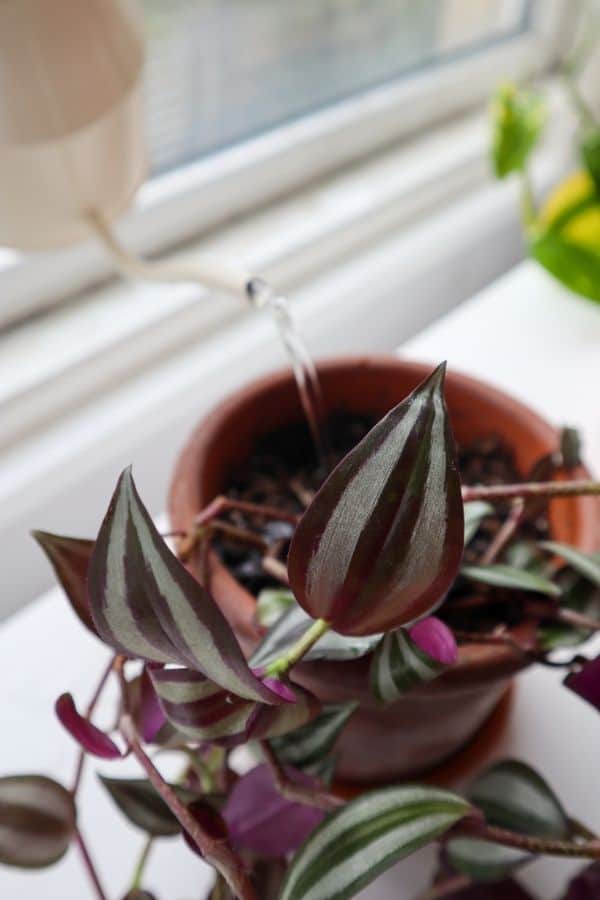
For best results, provide even moisture with plenty of drainage – just as they would have on the forest floor.
As always, I’d always recommend a pot with a drainage hole for tropical plants. It really takes the guesswork out of the watering process and lets you add water liberally without the risk of root rot.
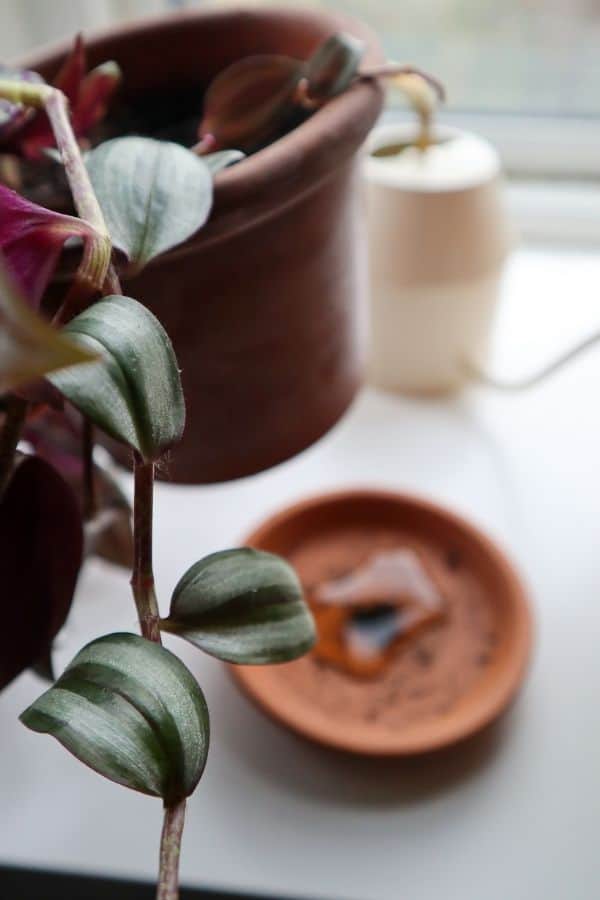
In a terrarium/vivarium, the delicate balance between moisture and drainage is even more important – especially if you’re planting T. zebrina terrestrially and using it for ground cover.
Substrate / Soil
The Inch Plant isn’t overly picky on its substrate needs.
It’ll readily grow in most typical mixes, but it’ll do best in a tropical blend that’s able to provide plenty of moisture retention and drainage.
If fresh potting soil is all you have to hand, it certainly can’t hurt to add some perlite or pumice in there. Moist soil is good, but consistently soggy soil is a recipe for disaster.
In a terrarium, I’d use my standard blend that uses a coco coir base and sphagnum moss for water retention, with extra orchid bark and pumice/lava rock for aeration.
Temperature & Humidity
Tradescantia zebrina is one of the hardier tropical plants.
It’s able to manage in chilly conditions down to 50°F (10°C), but it won’t be happy about it.
Ideally, you’ll be looking at providing a temperature range of about 65-75°F (18-24°C) and 50% humidity or more – you’ll get plenty of growth that way.
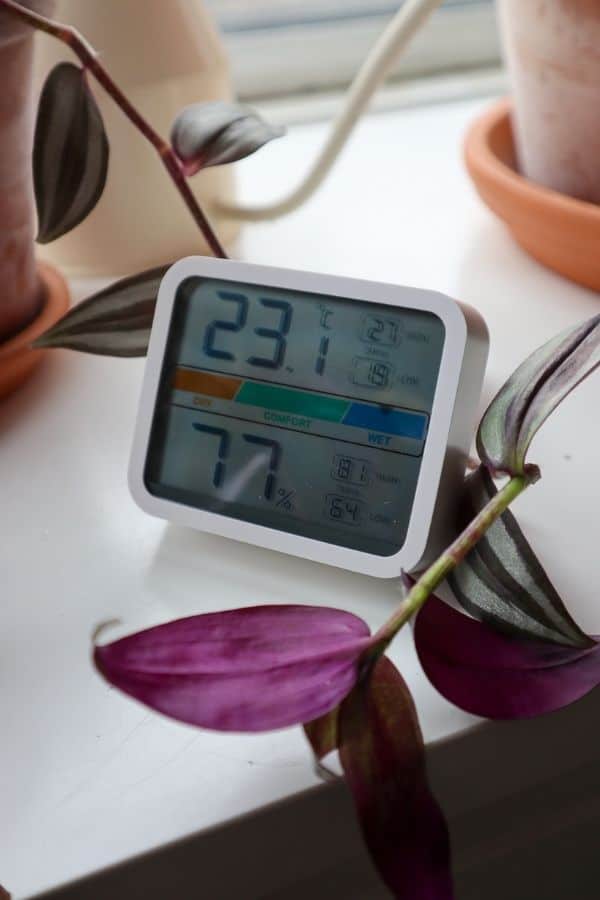
Growth
Native to Mexico and Central America, this tropical vine is definitely more of a sprawler than a climber.
You’d typically find it forming a network of overlapping foliage on the forest floor, so you can expect it to try to do the same wherever you put it in your home.
The fact that it’s a Spiderwort (named because the angular growth habit looks like spider legs) means the way this grows is pretty… chaotic.
Every few leaves, the stem will disjoint and start off in another direction.
The result is either a network of denser foliage – that can be arranged as such – or a somewhat haphazard trailing vine.
If you’d prefer a bushy plant, I’d recommend liberally pinching off stems.
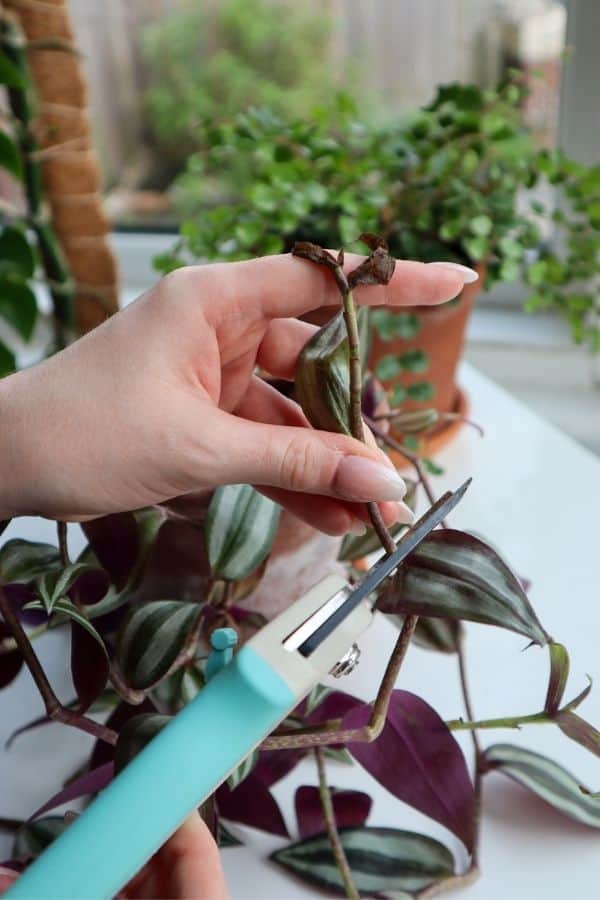
The Inchplant can and will grow back with ease, even after heavy pruning.
It’s probably worth semi-regularly adding some balanced liquid fertilizer, too – particularly in the growing season – as it’s always putting out significant growth.
Propagation
Tradescantia zebrina is a propagation champion and will readily grow from cuttings (hence their flooding of FB swap groups).
That being said, due to its leggy stems, it does require a slightly different approach from your typical tropical vine.
With Aroids, for example (think Pothos and Philodendron), you’d normally take a small stem cutting with a node, leaf, and aerial root attached. But with the individual vines of Tradescantia, there are no aerial roots or convenient short branches to snip off.
So, you’ll need a lot more stem to get what you need.
We essentially give our plant a haircut – snipping off about 6′ lengths from the ends.
Then, you can go ahead and remove the lower leaves to expose more stem. This will:
- a) Make them easier to plant up in water.
- b) Provides more opportunities to root up from.
- c) Ultimately ends up with a high chance of propagation success.
These cuttings can then be put directly into water. Ideally, you’ll have some long and thin glass containers to help keep these long cuttings in place (e.g. test tubes, small bottles).
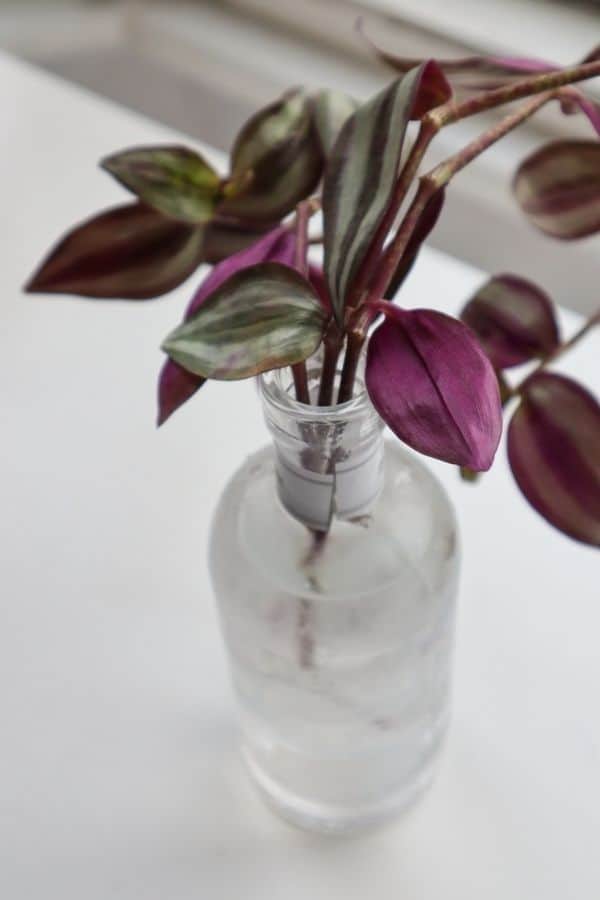
You should see some root development after a week and sufficient growth to pot them up after about a month.
Varieties & Similar Plants
Tradescantia is a fairly large genus of over 75 plants.
With a wide range of vibrant colors on offer between the many varieties, there really is something for everyone.
Even just within the T. zebrina genus, there’s a huge amount of cultivars in green, silver, and pink:
- T. zebrina ‘Quadricolor’
- T. zebrina ‘Burgundy’
- T. zebrina ‘Green Ghost’
Those of the Tradescantia fluminensis genus (sometimes labeled as albiflora) tend to have much softer and lighter foliage. The most popular of which is the gorgeous T. fluminensis ‘Nanouk’, which is also more compact and arguably more manageable for terrariums.
Or, throw caution to the winds and check out the giant leaves of the Tradescantia pallida.
Frequently Asked Questions
Tradescantia zebrina can take full sun, but they have been known to fade over time if subjected to intense direct sunlight for extended periods.
Tradescantia zebrina is a very easy plant to grow indoors. It’ll grow under most typical household conditions without concern.
Yes, the sap contained within the stems of Tradescantia zebrina is toxic and can also cause skin irritation.
Tradescantia are tolerant of low light conditions and will produce some growth with minimal ambient lighting. However, both their color and growth will be boosted with bright light.
As a sprawling species, Tradescantia zebrina won’t grow very tall but can grow to produce long vines that are several feet in length.
Yellow leaves can be a symptom of a variety of issues with Tradescantia zebrina, however the most likely culprit is overwatering.
